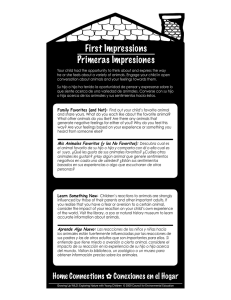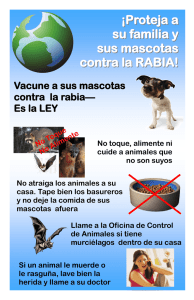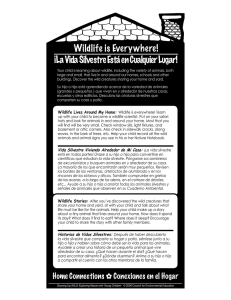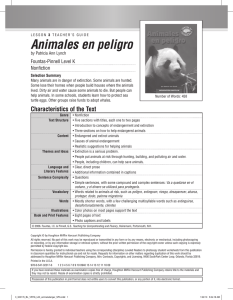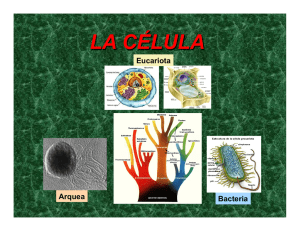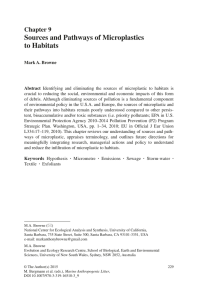Animals and Their Habitats
Anuncio
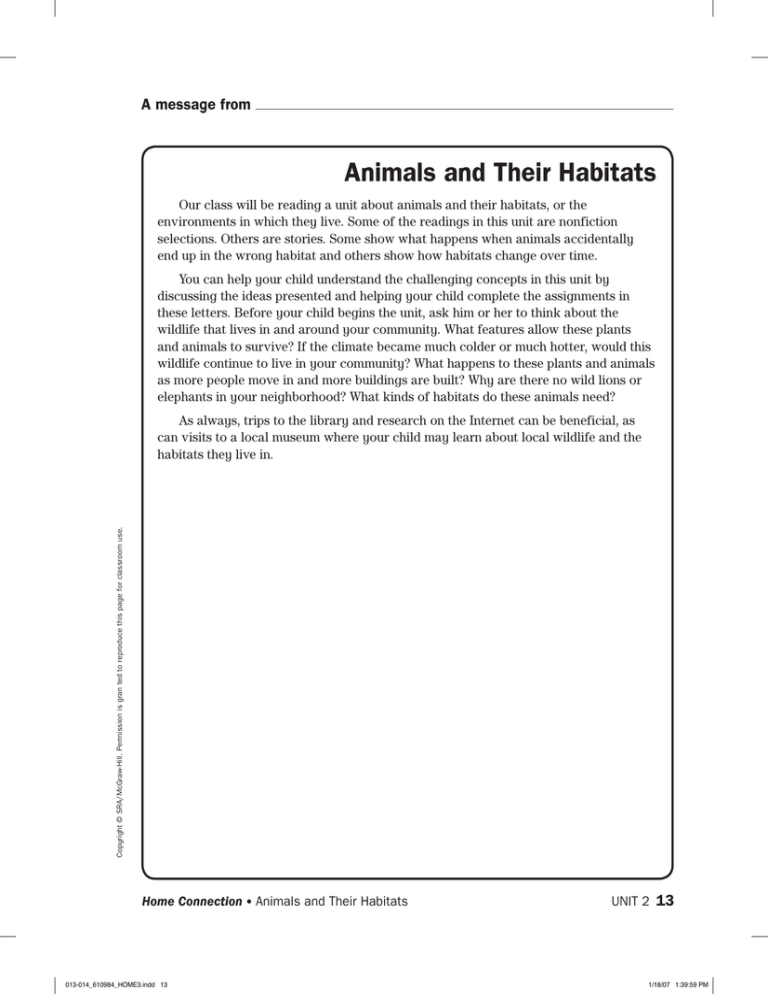
A message from Animals and Their Habitats Our class will be reading a unit about animals and their habitats, or the environments in which they live. Some of the readings in this unit are nonfiction selections. Others are stories. Some show what happens when animals accidentally end up in the wrong habitat and others show how habitats change over time. You can help your child understand the challenging concepts in this unit by discussing the ideas presented and helping your child complete the assignments in these letters. Before your child begins the unit, ask him or her to think about the wildlife that lives in and around your community. What features allow these plants and animals to survive? If the climate became much colder or much hotter, would this wildlife continue to live in your community? What happens to these plants and animals as more people move in and more buildings are built? Why are there no wild lions or elephants in your neighborhood? What kinds of habitats do these animals need? Copyright © SRA/McGraw-Hill. Permission is gran ted to reproduce this page for classroom use. As always, trips to the library and research on the Internet can be beneficial, as can visits to a local museum where your child may learn about local wildlife and the habitats they live in. Home Connection • Animals and Their Habitats 013-014_610984_HOME3.indd 13 UNIT 2 13 1/18/07 1:39:59 PM Un mensaje de Animals and Their Habitats Nuestra clase va a leer una unidad sobre los animales y su hábitat, o el medio ambiente en el que viven. Algunas de las lecturas de esta unidad son selecciones no ficticias. Otras son cuentos. Algunas muestran qué ocurre cuando los animales terminan de forma accidental en el hábitat equivocado y otros muestran cómo los hábitat cambian a lo largo del tiempo. Usted puede ayudar a su hijo(a) a entender los conceptos difíciles en esta unidad comentando las ideas que se presentan y ayudando a su hijo(a) a completar las tareas en estas cartas. Antes de que su hijo(a) empiece la unidad, pídale que piense sobre la vida silvestre en los alrededores de su comunidad. ¿Qué aspectos permiten a estas plantas y animales sobrevivir? Si el clima fuese mucho más frío o mucho más cálido, ¿continuarían estas plantas y animales en la comunidad? ¿Qué ocurre a estas plantas y animales cuando un mayor número de personas se trasladan a vivir al área y se construyen más edificios? ¿Por qué no hay leones o elefantes en el vecindario? ¿Qué tipo de hábitat necesitan estos animales? Como siempre, visitas a la biblioteca y búsquedas en Internet pueden ser de gran beneficio. En visitas al museo local, su hijo(a) aprenderá sobre la vida silvestre local y el hábitat en el que viven. Copyright © SRA/McGraw-Hill. Permission is granted to reproduce this page for classroom use. 14 Unidad 2 013-014_610984_HOME3.indd 14 Animales y su hábitat • Home Connection 1/18/07 1:39:59 PM
